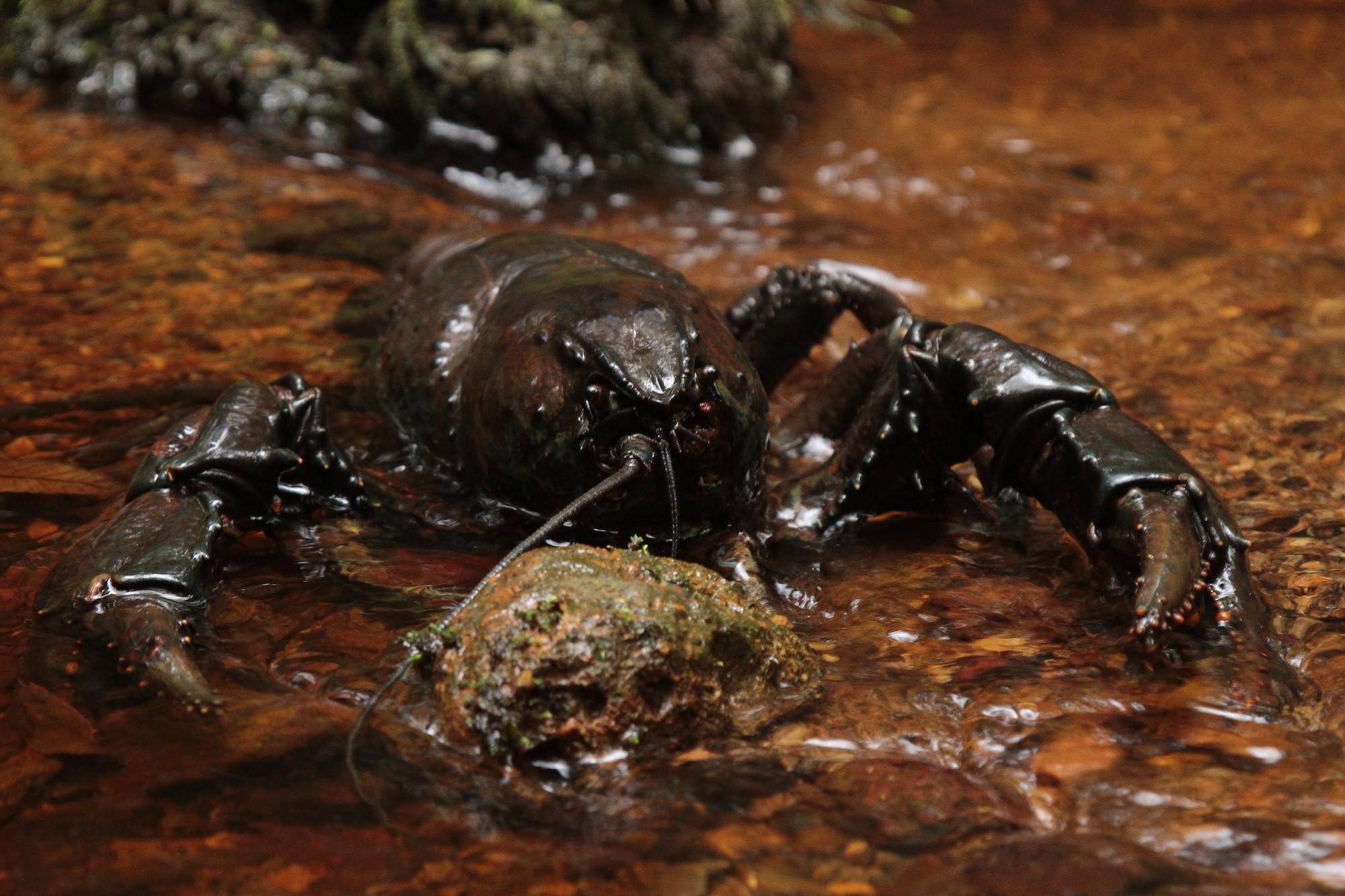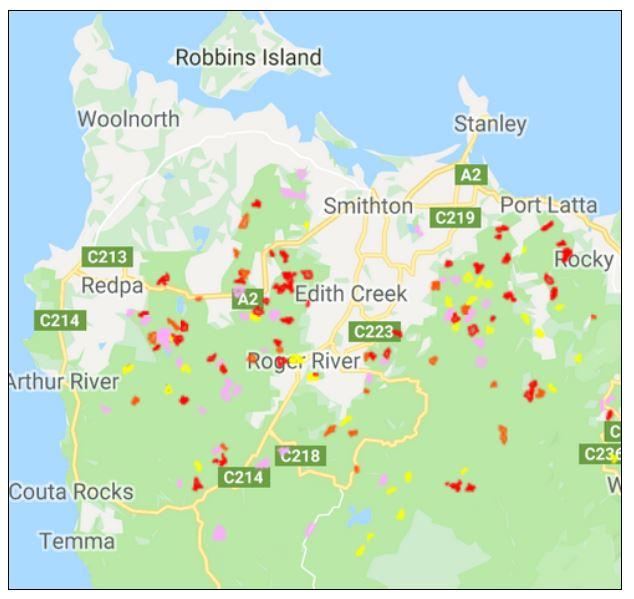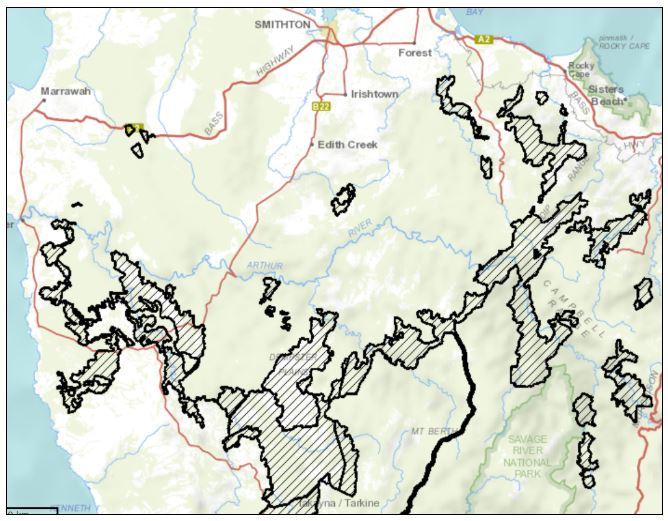News - 09 May 2019
Giant Freshwater Crayfish (Tas)

tayatea or Astacopsis gouldi
Conservation status: VULNERABLE (EPBC Act); ENDANGERED (IUCN Red List of Threatened Species) Uplisted since RFA commenced? NO EPBC Act recovery plan? YES |
Threats
“The Giant Freshwater Crayfish is endemic to rivers of northern Tasmania. This species requires well-shaded streams that have good water quality, low sediment levels, snags, pools and undercut banks (Growns 1995; Hamr 1990a, b; Lynch 1967). The Giant Freshwater Crayfish requires a stable thermal regime of relatively low water temperature (TSS 2006).
“Giant Freshwater Crayfish populations have a restricted distribution and have experienced reductions in the number of mature individuals within a three generation period, and also decreases in the extent of occurrence and area and quality of habitat(TSS 2006), all of which present significant challenges for their recovery and exert strong pressures on their survival in the wild.
“In forestry [logging] areas, riparian and aquatic habitats are affected by activities such as road construction, logging and the establishment and subsequent harvesting of plantation timber (TSS 2006). Effects include loss of canopy cover, increased runoff, sedimentation, and changes in hydrology (TSS 2006). In situations where streamside vegetation is removed within clear-cutting forestry operations impacts can include changes to stream flows, geomorphology, nutrient dynamics, carbon budgets and impacts to in-stream habitat (Thompson et al. 2009).”
Source: Recovery Plan for the Giant Freshwater
Crayfish


Full Tasmanian logging plan map
Next: Koala (NSW/Vic)

Our forest wildlife in crisis: Koalas are listed nationally as Vulnerable, yet no recovery plan currently exists for them.